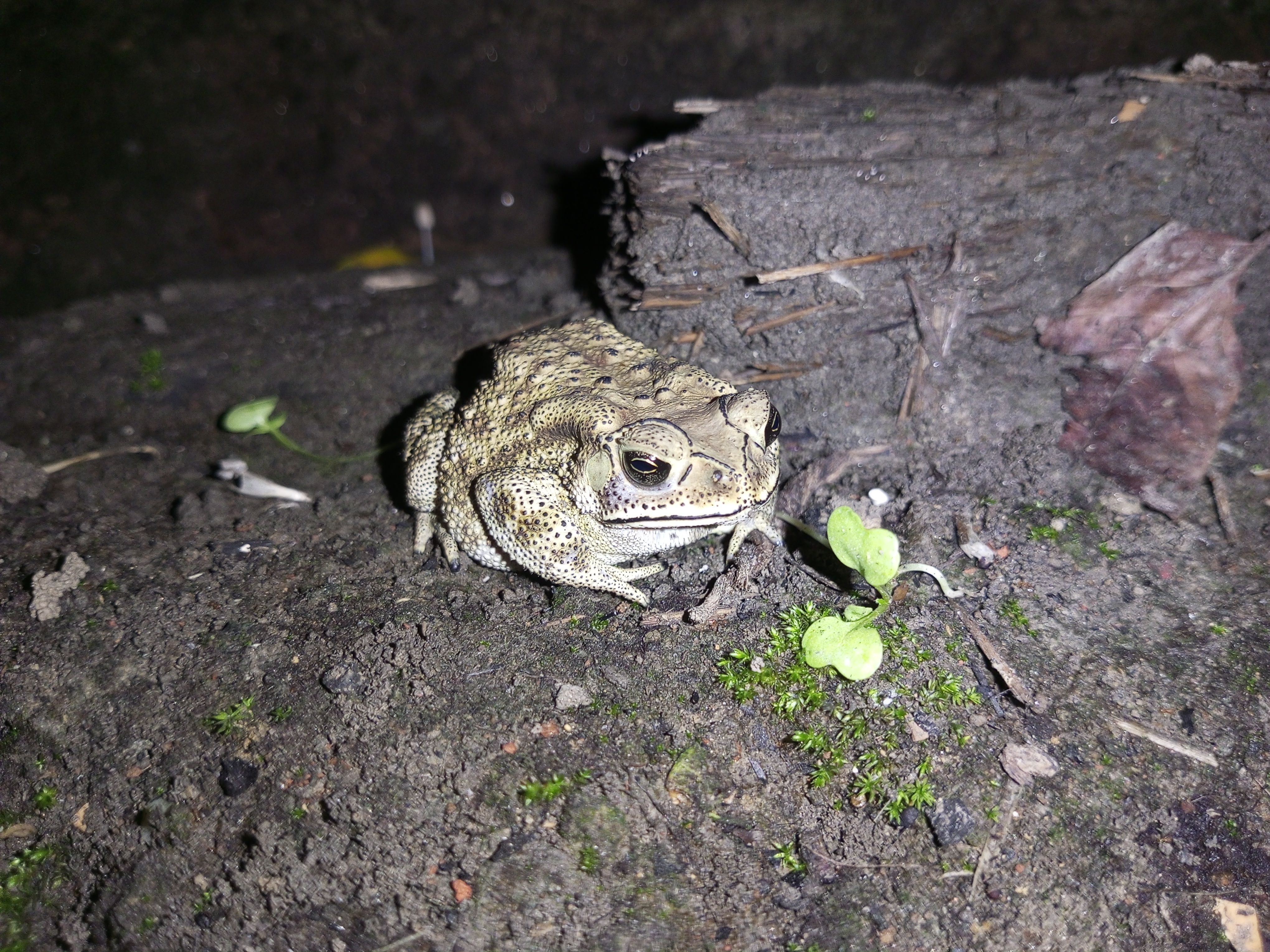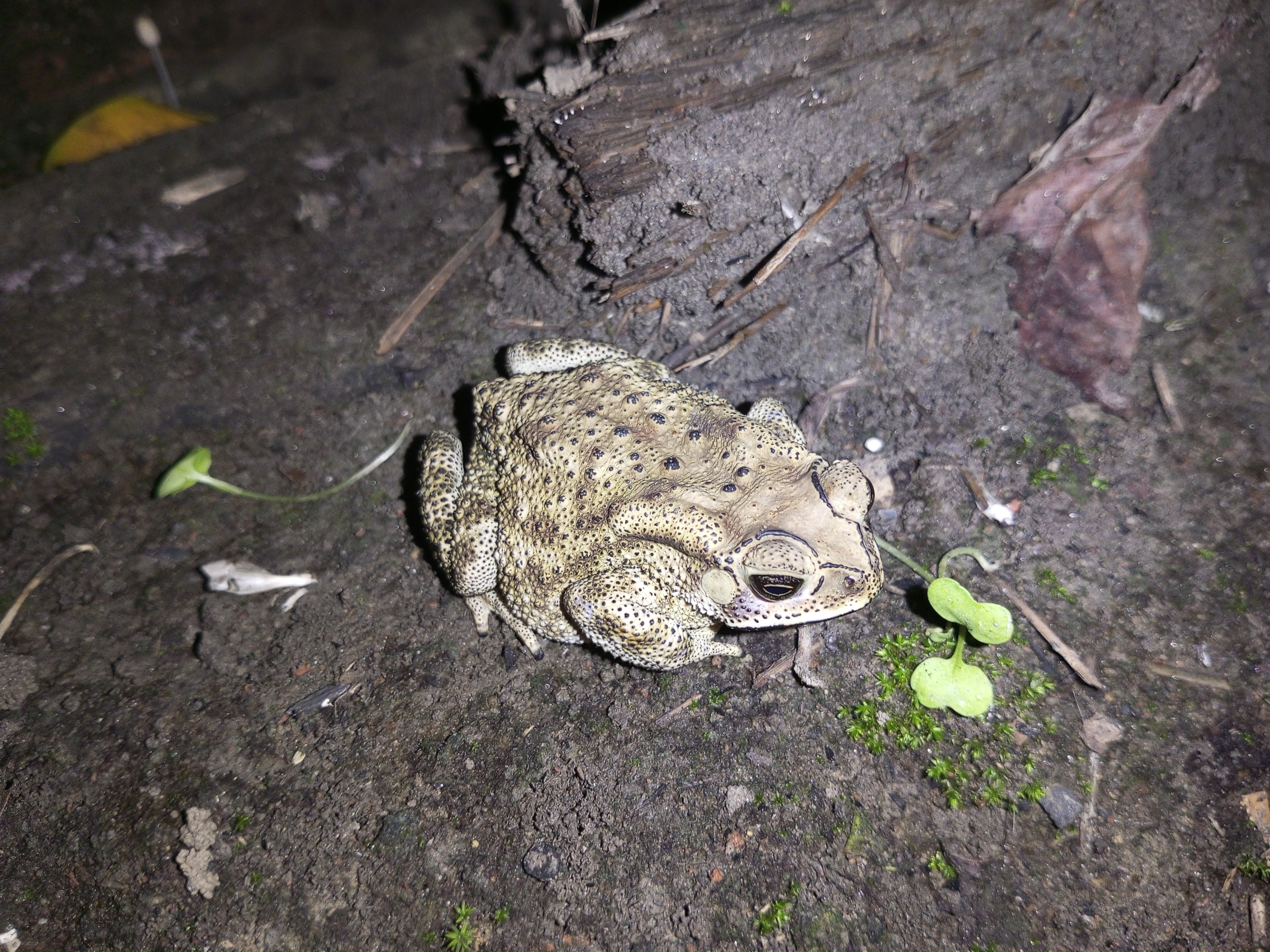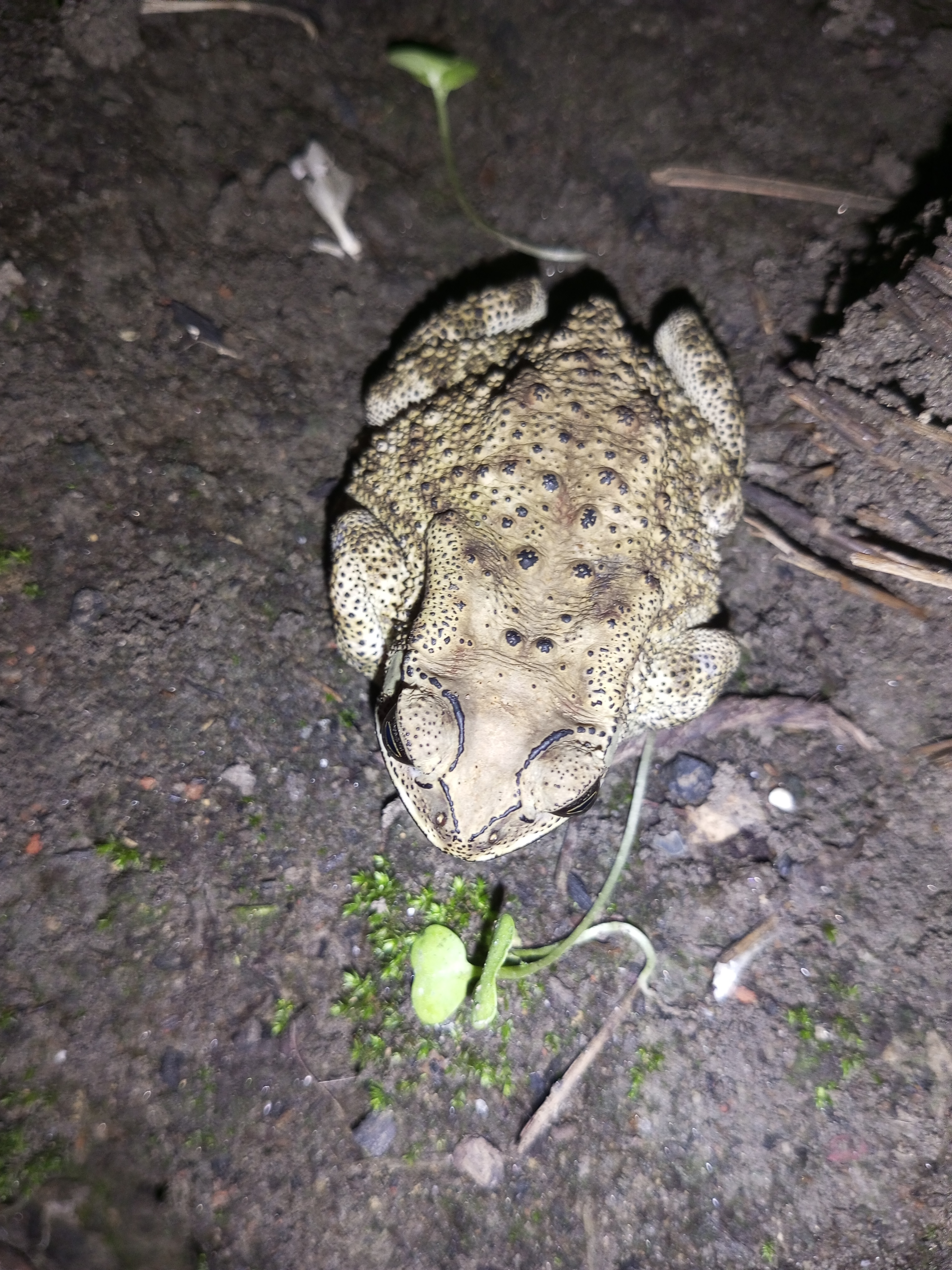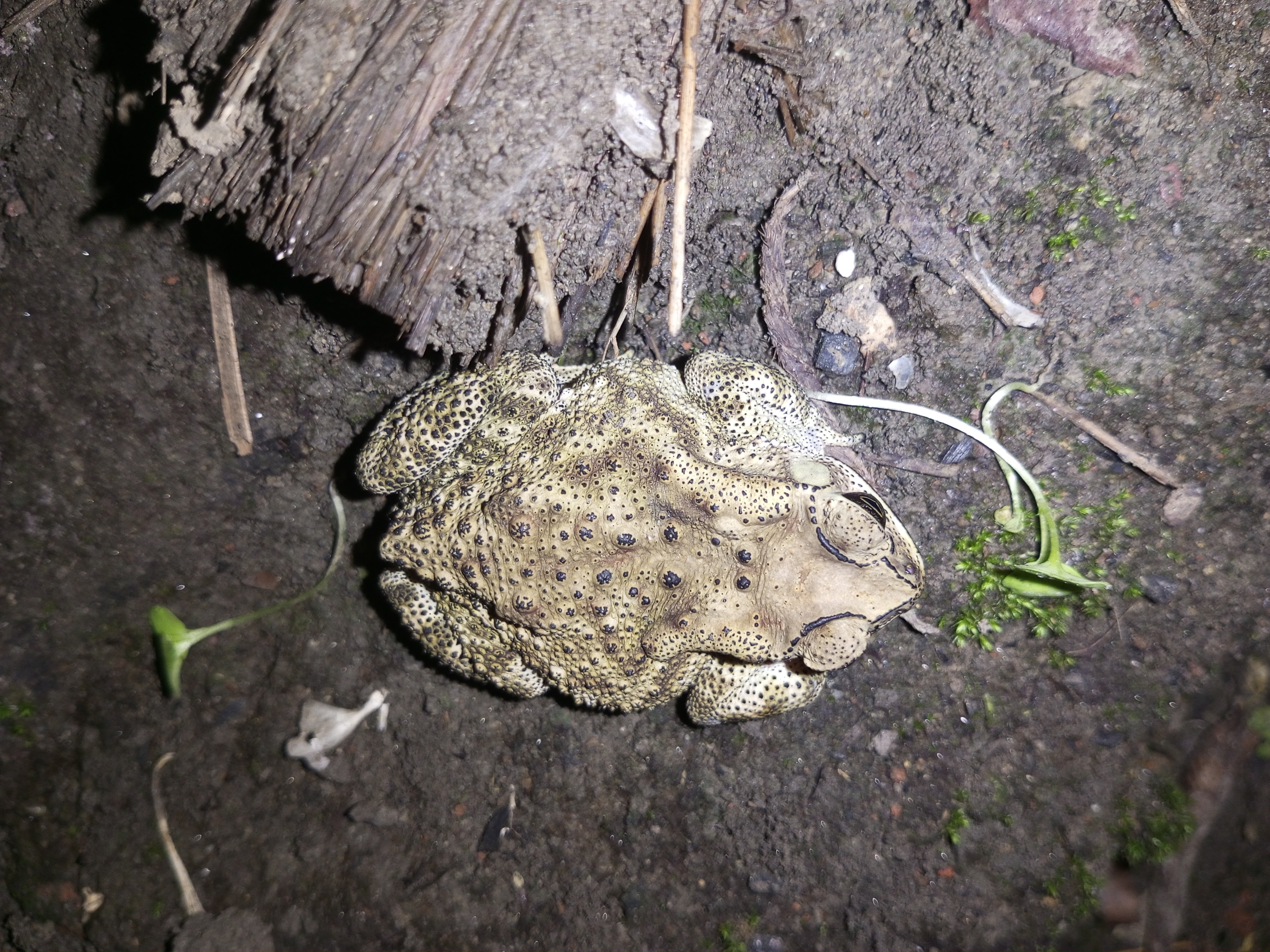Asian common toad
| Latin name | observation date | Location |
|---|---|---|
| Toad | 01.11.2024 | Meherpur, Khulna, Bangladesh |

They are medium to large-sized toads, typically reaching lengths of 8–15 cm (3–6 inches).Their coloration can vary but is generally brown, gray, or dark green, with a bumpy or wart-like texture. They often have darker blotches or patches on their skin.
Behind their eyes, they have prominent, kidney-shaped glands that produce a toxin for defense against predators. Asian common toads are adaptable and can thrive in various environments, including forests, grasslands, agricultural areas, and urban settings. They are often found near bodies of water, such as ponds, rivers, and streams, where they breed. These toads are opportunistic feeders, consuming a variety of invertebrates like insects, worms, and other small animals.
Mostly active at night, they are primarily ground-dwelling but can climb if necessary. Their nocturnal habits help them avoid predators and extreme daytime temperatures. They breed during the rainy season, laying long strings of eggs in water. The tadpoles hatch and develop in aquatic environments before metamorphosing into adult toads.The toxins secreted by their parotoid glands act as a deterrent to predators, which can cause adverse reactions or even death in some animals if ingested. These toxins also make Asian common toads potentially harmful to domestic pets if encountered. In some places outside their native range, such as Madagascar, the Asian common toad has become invasive. Its introduction can disrupt local ecosystems, partly due to its toxic nature, which local predators may not be adapted to handle. This has raised ecological concerns, as invasive toads can outcompete native species for resources and alter the food web dynamics. The Asian common toad is an example of a species with both ecological resilience and impact, capable of adapting to various environments and affecting ecosystems far beyond its original range.




| Camera used | Smartphone |
|---|---|
| Lens | Cell phone camera |
| F-stop | - |
| Iso speed | ISO |
| Focal length | MM |
| Photograph | Toad |
| Location | Meherpur, Bangladesh |
| Photographer | @najidulislam |
| Link to original | community |
|---|---|
| Link | https://www.inaturalist.org/observations/250230602 |
| Latitude | Longitude | Map |
|---|---|---|
| 23.84346 | 88.80607 | https://www.openstreetmap.org/#map=11/23.8221/88.7462 |